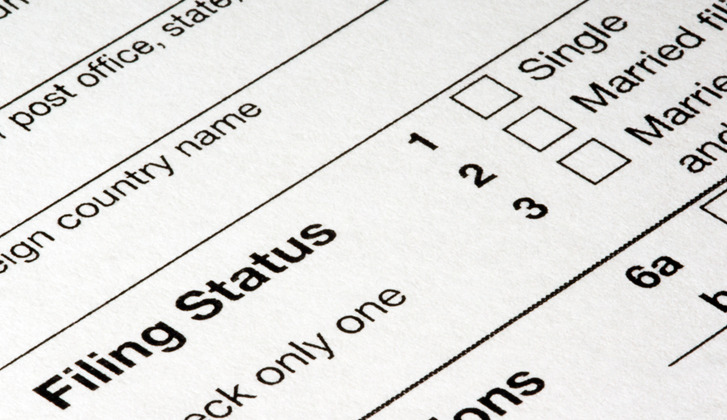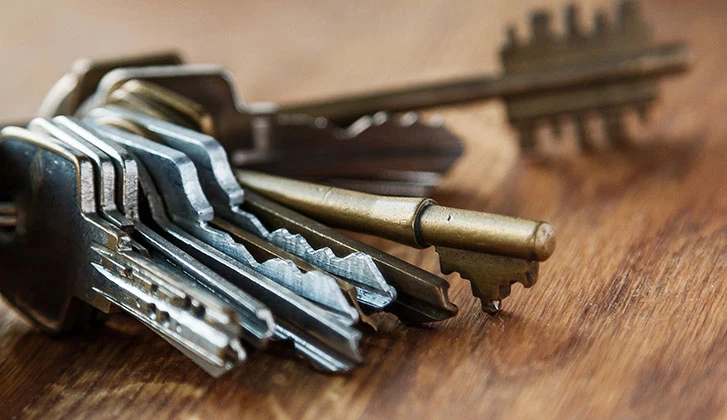NOTICE: Internet Explorer was retired by Microsoft on June 15th, 2022 and is no longer supported. This could change how you access Online Banking.
ALERT: Some banking centers may have different hours due to inclement weather. Please call your local branch before venturing out and stay safe!
Tax Brackets and Statuses

Welcome to WesBanco Wellness; a Series for Your Financial Health. Here we will tackle budgeting, debts, safe web practices and more to help get you into the best financial shape of your life. January 29th is National Earned Income Tax Credit Awareness Day! Visit the IRS website here to learn about what the credit is, and see if you may qualify.
How much you owe in federal income taxes is determined by many factors, but your tax bracket and status will likely have the biggest impact.
Tax Brackets
You pay federal income tax at one or more tax rates, or percentages, based on the tax bracket(s) you fall into. A tax bracket is a range of income decided by the government. For example, for single filers for tax year 2020, $0-$9,875 is one bracket, $9,876-40,125 is another, and so on.
The U.S. uses a progressive tax system. That means that taxable income is not all taxed at the same rate unless all of it falls into the lowest bracket. If you have taxable income that puts you into a higher bracket, the section of income that falls into each one is taxed at that rate.
Let’s look at an example. If you were a single filer for 2020 and your taxable income was $50,000, you would fall into the first three brackets. That means $9,875 would be taxed at 10%, $30,249 (the amount of money that falls between $9,876 and $40,125) would be taxed at 12%, and $9,874 (the amount of money between $40,126 and your total $50,000) would be taxed at 22%.
At the Margin
Your marginal tax rate is the highest rate that you pay depending on the bracket you fall into. For the example above, your marginal tax rate would be 22%. People with the lowest taxable incomes have the lowest marginal rate and those with the highest have the highest marginal rate.
On the other hand, your effective tax rate is the actual percentage of your total taxable income that you pay. For the above example, you would pay a total of $6,789.66 in taxes on $50,000, meaning your effective tax rate would be 13.5%. Unless you pay only at the lowest rate, your effective tax rate is always less than your marginal rate.
Filing Status
Filing statuses are the major reason that people with similar incomes owe different amounts because it affects which tax bracket you fall into. When you’re supporting yourself—which means you get less than half of your support from someone else—you choose your filing status from among the five options that are available, based on your actual living situation, or, more precisely, your situation as the IRS defines it. The options are:
- Single
- Married filing jointly
- Married filing separately
- Head of household
- Widow or widower with dependent child
Alternative Minimum Tax
The Alternative Minimum Tax (AMT) is another tax system that was created to make sure high-income taxpayers couldn’t avoid paying their fair share of taxes by taking advantage of loopholes. This alternative way of calculating taxes is done automatically by most tax software alongside regular rates using tax brackets. If there’s a difference between the taxes you owe with the regular rate and the AMT, you must pay the higher amount.
Not That CommonThere are some curiosities in the tax code that you may run up against from time to time. For example, if you live in the District of Columbia or a state that recognizes common-law marriage, or if you lived in one of those states when you began your relationship, you can choose to file under the status “married filing jointly” for your federal return, even though you’re not legally married. It may be wise to check for any such unusual situations that you may fall into. |
Content is for informational purposes only and is not intended to provide legal or financial advice. The views and opinions expressed do not necessarily represent the views and opinions of WesBanco.
While we hope you find this content useful, it is only intended to serve as a starting point. Your next step is to speak with a qualified, licensed professional who can provide advice tailored to your individual circumstances. Nothing in this article, nor in any associated resources, should be construed as financial or legal advice. Furthermore, while we have made good faith efforts to ensure that the information presented was correct as of the date the content was prepared, we are unable to guarantee that it remains accurate today.
Neither Banzai nor its sponsoring partners make any warranties or representations as to the accuracy, applicability, completeness, or suitability for any particular purpose of the information contained herein. Banzai and its sponsoring partners expressly disclaim any liability arising from the use or misuse of these materials and, by visiting this site, you agree to release Banzai and its sponsoring partners from any such liability. Do not rely upon the information provided in this content when making decisions regarding financial or legal matters without first consulting with a qualified, licensed professional.
Looking for Savings?
The perfect companion to your WesBanco checking account. All of our accounts are available with a Companion Savings account with no minimum balance requirement or monthly maintenance fee when monthly statements are combined and accounts have identical ownership.
Companion Savings
Free Mobile Deposits



